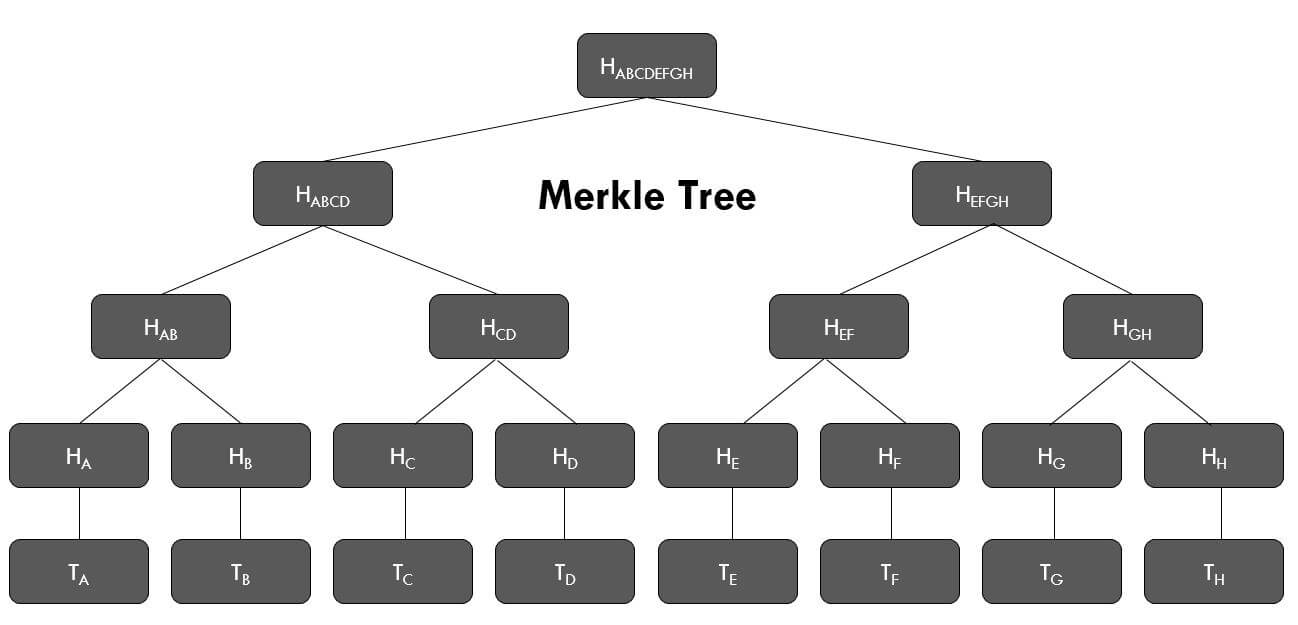Introduction
Merkle trees are a fundamental data structure in distributed systems and blockchain technology. They are used to efficiently and securely verify the integrity of data, and they have become a key building block for many decentralized applications.
In the context of solidity, a merkle tree is a tree-like data structure that is used to store and verify the integrity of data in a smart contract. Solidity is a programming language for writing smart contracts on the Ethereum blockchain, and it provides support for implementing and using merkle trees.
A merkle tree is constructed by taking a set of data items, called leaves, and hashing them to produce a set of intermediate nodes. The intermediate nodes are then hashed together to produce another set of nodes, and this process is repeated until a single root node is produced. The root node is called the merkle root, and it is a unique identifier for the entire tree.
Here is an example of how a merkle tree might be constructed in solidity:
// Define a set of data items
bytes32[] leaves = [ keccak256("item 1"), keccak256("item 2"), keccak256("item 3"), keccak256("item 4")];
// Compute the merkle root
bytes32[] nodes = leaves;
while (nodes.length > 1) {
if (nodes.length % 2 == 1) {
nodes.push(nodes[nodes.length - 1]);
}
bytes32[] newNodes;
for (uint i = 0; i < nodes.length; i += 2) {
newNodes.push(keccak256(abi.encodePacked(nodes[i], nodes[i + 1])));
}
nodes = newNodes;
}
bytes32 merkleRoot = nodes[0];

Merkle
Merkle trees have several benefits and advantages, which make them a valuable data structure in distributed systems and blockchain technology. Some of the key benefits of merkle trees include:
Efficiency
Merkle trees are highly efficient data structures, as they allow large amounts of data to be efficiently organized and verified. For example, a merkle tree with a large number of leaves can be verified by only reading and hashing a small number of nodes, which makes it much faster and more efficient than other methods for verifying data integrity.
Security
Merkle trees provide a high level of security, as they allow data to be verified without revealing its contents. This is because the merkle root, which is the unique identifier for the entire tree, can be computed from the hashes of the leaf nodes, without needing to read or access the data in the leaves. This makes it difficult for an attacker to modify the data without being detected.
Scalability
Merkle trees are highly scalable data structures, as they can handle large amounts of data without degrading in performance. This is because the size of the tree grows logarithmically with the number of leaves, which means that it can handle a large number of leaves without becoming unwieldy or slow.
Overall, the benefits of merkle trees make them a valuable tool for ensuring the integrity and security of data in distributed systems and blockchain technology.
